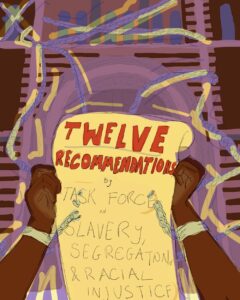One of the most significant assemblage artists active today, Betye Saar (b. 1926, Los Angeles) addresses themes of spirituality, gender, and race in her work. She is part of the strong Southern Californian tradition of creating art through found objects. For the past fifty years, Saar has combined items typically discovered at flea markets and secondhand stores into conceptually and physically elaborate creations. “Finding something old that has its memory has always been important to me,” she explains.
Saar’s creative process starts with a particular found object—a piece of leather, a cot, a tray, a birdcage, an ironing board. These objects are ordinary, used, slightly debased things most people would simply pass by.
After identifying a primary object that calls to her, Saar surveys her stockpile of other found materials to see what feels appropriate to combine with it. Once she has arrived at a vision of the final work in her mind’s eye, Saar responds with a sketch: “The sketch is to remind me how [a piece] is going to look when I get it put together.”
Saar has kept sketchbooks throughout her career, laying out quick visuals for works, jotting down ideas about materials, and noting potential titles for finished pieces. She has also kept more elaborate travel sketchbooks containing exquisite watercolors and collages. This exhibition offers the first public opportunity to view Saar’s sketchbooks and examine the relationship among her found objects, sketches, and finished works—illuminating, in the artist’s words, “the mysterious transformation of object into art.”




